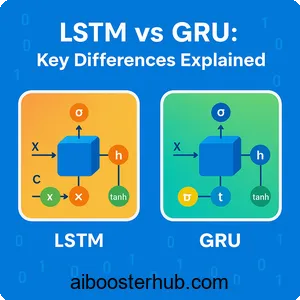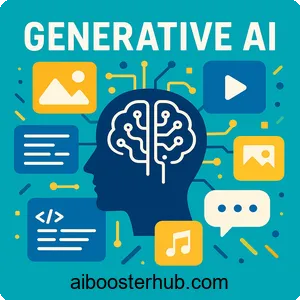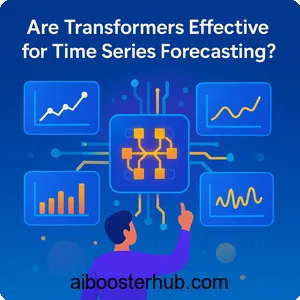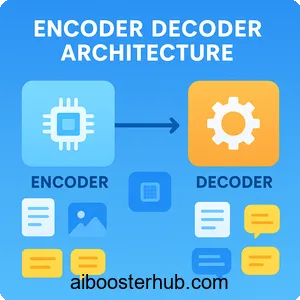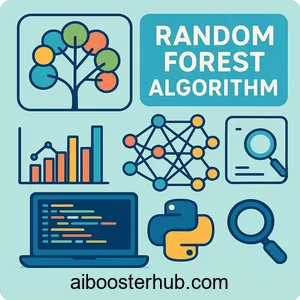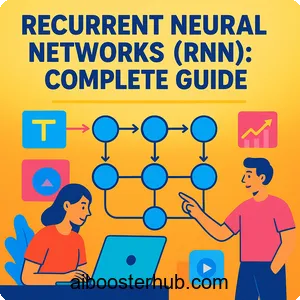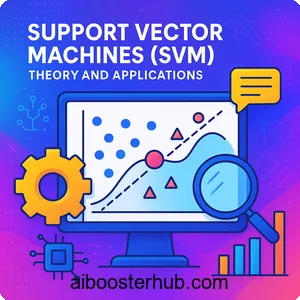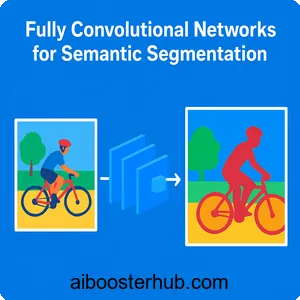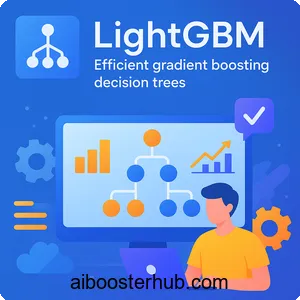Open Source Embedding Models: Gemma, Qwen, and Beyond
Embedding models have become the backbone of modern AI applications, transforming text, images, and other data types into dense vector representations that machines can understand and process. As the AI landscape evolves, open source embedding models have emerged as powerful alternatives to proprietary solutions, offering flexibility, transparency, and cost-effectiveness.
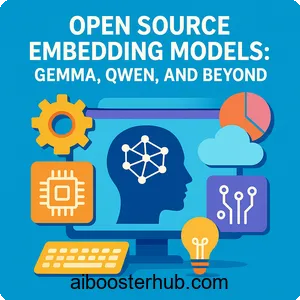
In this comprehensive guide, we’ll explore the leading open source embedding models, including Gemma, Qwen, and other breakthrough solutions that are reshaping how we approach semantic understanding in artificial intelligence.
Content
Toggle1. Understanding embedding models and their importance
What are embedding models?
Embedding models are neural networks designed to convert discrete data—such as words, sentences, or documents—into continuous vector representations in a high-dimensional space. These vectors capture semantic meaning, allowing machines to understand relationships between different pieces of information. When two pieces of text have similar meanings, their embeddings will be closer together in this vector space.
The mathematical foundation of embeddings relies on the principle that similar items should have similar representations. Given a text input \( x \), an embedding model \( f \) produces a vector \( v \):
$$ v = f(x) \in \mathbb{R}^d $$
where \( d \) is the dimensionality of the embedding space, typically ranging from 384 to 1536 dimensions or more.
Why open source matters
Open source embeddings provide several critical advantages over closed-source alternatives. First, they offer complete transparency—you can examine the model architecture, training data, and implementation details. Second, they eliminate vendor lock-in and ongoing API costs. Third, they enable on-premises deployment for sensitive data that cannot be sent to external servers. Finally, open source embedding models can be fine-tuned on domain-specific data to achieve superior performance for specialized tasks.
Key applications
Embedding models power numerous AI applications: semantic search engines that understand user intent beyond keyword matching, recommendation systems that suggest relevant content, retrieval-augmented generation (RAG) systems that enhance large language models with external knowledge, text classification for sentiment analysis and topic modeling, and clustering algorithms that group similar documents automatically.
2. Gemma embedding: Google’s contribution to open source AI
Introduction to Gemma
Gemma represents Google’s strategic entry into the open source AI ecosystem. Built on the same research and technology that powers the Gemini models, Gemma embedding provides high-quality vector representations while maintaining computational efficiency. The architecture leverages transformer-based designs with optimizations specifically tailored for embedding generation.
Technical architecture
Gemma embedding models utilize a encoder-only transformer architecture, similar to BERT but with significant improvements. The model processes input text through multiple attention layers that capture contextual relationships between tokens. The key innovation lies in the attention mechanism formulation:
$$ \text{Attention}(Q, K, V) = \text{softmax}\left(\frac{QK^T}{\sqrt{d_k}}\right)V $$
where \( Q \), \( K \), and \( V \) represent query, key, and value matrices, and \( d_k \) is the dimension of the key vectors.
Using Gemma with sentence transformers
Implementing Gemma embedding in Python is straightforward with the sentence transformers library:
from sentence_transformers import SentenceTransformer
# Load the Gemma embedding model
model = SentenceTransformer('google/gemma-embedding-2b')
# Generate embeddings for sample texts
texts = [
"Open source AI models democratize technology",
"Machine learning requires quality training data",
"Neural networks learn patterns from examples"
]
embeddings = model.encode(texts)
# Calculate similarity between first two texts
from sklearn.metrics.pairwise import cosine_similarity
similarity = cosine_similarity([embeddings[0]], [embeddings[1]])[0][0]
print(f"Similarity score: {similarity:.4f}")
Performance characteristics
Gemma embedding models demonstrate competitive performance across standard benchmarks while offering faster inference speeds than many alternatives. The model excels particularly in multilingual scenarios and handles out-of-vocabulary terms gracefully through subword tokenization. Memory requirements remain reasonable, making deployment feasible even on resource-constrained systems.
3. Qwen embedding: Alibaba’s powerful multilingual solution
Overview of Qwen
Qwen embedding, developed by Alibaba Cloud, represents one of the most capable multilingual embedding solutions in the open source space. The name “Qwen” (通义千问) reflects its comprehensive language understanding capabilities. These models have been trained on diverse, high-quality datasets spanning multiple languages and domains, with particular strength in Asian languages.
Multilingual capabilities
Unlike many embedding models that primarily focus on English, Qwen embedding provides exceptional performance across dozens of languages. The training process employed a carefully curated multilingual corpus that ensures balanced representation. For Chinese language tasks, Qwen often outperforms specialized models, making it an excellent choice for applications serving Asian markets.
Integration with Huggingface
Qwen embedding integrates seamlessly with the Huggingface ecosystem:
from transformers import AutoTokenizer, AutoModel
import torch
# Load Qwen embedding model
tokenizer = AutoTokenizer.from_pretrained('Alibaba-NLP/gte-Qwen2-7B-instruct')
model = AutoModel.from_pretrained('Alibaba-NLP/gte-Qwen2-7B-instruct')
def get_qwen_embeddings(texts):
# Tokenize inputs
inputs = tokenizer(texts, padding=True, truncation=True,
return_tensors='pt', max_length=512)
# Generate embeddings
with torch.no_grad():
outputs = model(**inputs)
# Use mean pooling over token embeddings
embeddings = outputs.last_hidden_state.mean(dim=1)
return embeddings
# Example usage
sample_texts = [
"Artificial intelligence transforms industries"
]
embeddings = get_qwen_embeddings(sample_texts)
print(f"Embedding shape: {embeddings.shape}")
Comparison with other Chinese embedding models
When evaluated against models like bge-large-zh, Qwen embedding demonstrates superior performance on cross-lingual tasks. The bge-large-zh model, developed by the Beijing Academy of Artificial Intelligence, specializes in Chinese text but Qwen’s broader training enables better transfer learning across language boundaries. For pure Chinese applications, both models perform excellently, but Qwen’s versatility makes it preferable for multilingual systems.
4. DeepSeek embedding and other notable models
DeepSeek embedding
Emerging from DeepSeek AI’s research into efficient language understanding, this embedding solution has gained attention for its practical approach to semantic representation. The models optimize the balance between model size and performance, achieving impressive results with relatively compact architectures. These embeddings employ novel training techniques including contrastive learning with hard negative mining, where the model learns to distinguish between similar but distinct concepts:
$$ \mathcal{L} = -\log \frac{\exp(\text{sim}(z_i, z_j) / \tau)}{\sum_{k=1}^{N} \exp(\text{sim}(z_i, z_k) / \tau)} $$
where \( \text{sim} \) represents cosine similarity, \( \tau \) is a temperature parameter, and \( z_i, z_j \) are embeddings of positive pairs.
BGE (BAAI General Embedding) series
The Beijing Academy of Artificial Intelligence’s BGE models have gained significant traction in the open source community. The bge-large-zh specifically targets Chinese language tasks, while the English and multilingual variants provide comprehensive coverage. BGE models utilize a two-stage training process: first, large-scale pre-training on web-crawled data, followed by fine-tuning on high-quality labeled datasets for specific tasks.
from sentence_transformers import SentenceTransformer
# Load BGE model for Chinese text
bge_model = SentenceTransformer('BAAI/bge-large-zh-v1.5')
# Process Chinese documents
chinese_texts = [
"深度学习是人工智能的重要分支",
"神经网络模拟人脑工作方式",
"自然语言处理帮助计算机理解人类语言"
]
chinese_embeddings = bge_model.encode(chinese_texts)
# BGE models support adding instructions for asymmetric tasks
query_instruction = "为这个句子生成表示以用于检索相关文章:"
query = query_instruction + "什么是深度学习?"
query_embedding = bge_model.encode(query)
Specialized embedding models
Beyond general-purpose models, the open source ecosystem includes specialized solutions. Code embedding models like CodeBERT and GraphCodeBERT excel at representing programming languages. Scientific paper embeddings like SciBERT and SPECTER2 understand academic literature. Domain-specific models trained on medical, legal, or financial corpora provide superior performance within their niches.
5. Working with Ollama embedding model and local deployment
Introduction to Ollama
Ollama simplifies the process of running large language models and embedding models locally. It provides a user-friendly interface for downloading, managing, and serving open source models without complex configuration. For embedding applications, Ollama offers a straightforward API that abstracts away infrastructure complexity.
Setting up Ollama embeddings
Installing and using Ollama for embeddings requires minimal setup:
import requests
import json
def get_ollama_embedding(text, model="nomic-embed-text"):
"""
Generate embeddings using Ollama's local API
"""
url = "http://localhost:11434/api/embeddings"
payload = {
"model": model,
"prompt": text
}
response = requests.post(url, json=payload)
if response.status_code == 200:
return response.json()['embedding']
else:
raise Exception(f"Error: {response.status_code}")
# Example usage
text = "Local embeddings provide privacy and control"
embedding = get_ollama_embedding(text)
print(f"Generated {len(embedding)}-dimensional embedding")
# Batch processing multiple texts
def batch_embed(texts, model="nomic-embed-text"):
embeddings = []
for text in texts:
emb = get_ollama_embedding(text, model)
embeddings.append(emb)
return embeddings
documents = [
"Privacy-focused AI deployment",
"On-premises machine learning",
"Self-hosted embedding generation"
]
doc_embeddings = batch_embed(documents)
Available Ollama embedding models
Ollama supports several high-quality embedding models including nomic-embed-text for English text, mxbai-embed-large for multilingual content, and all-minilm for lightweight applications. Each model offers different trade-offs between size, speed, and accuracy. The nomic-embed-text model, in particular, provides excellent performance with 768-dimensional embeddings suitable for most applications.
Performance optimization
When deploying embedding models locally with Ollama, several optimization strategies improve throughput. First, batch processing reduces overhead by encoding multiple texts simultaneously. Second, caching frequently accessed embeddings eliminates redundant computation. Third, GPU acceleration dramatically speeds up inference when available. Finally, model quantization reduces memory requirements with minimal accuracy loss.
6. Practical implementation and best practices
Building a semantic search system
Let’s implement a complete semantic search system using open source embeddings:
import numpy as np
from sentence_transformers import SentenceTransformer
from sklearn.metrics.pairwise import cosine_similarity
class SemanticSearchEngine:
def __init__(self, model_name='sentence-transformers/all-MiniLM-L6-v2'):
self.model = SentenceTransformer(model_name)
self.document_embeddings = None
self.documents = []
def index_documents(self, documents):
"""
Index a collection of documents by generating embeddings
"""
self.documents = documents
print(f"Generating embeddings for {len(documents)} documents...")
self.document_embeddings = self.model.encode(
documents,
show_progress_bar=True,
batch_size=32
)
def search(self, query, top_k=5):
"""
Search for most relevant documents given a query
"""
if self.document_embeddings is None:
raise ValueError("No documents indexed. Call index_documents first.")
# Generate query embedding
query_embedding = self.model.encode([query])
# Calculate similarities
similarities = cosine_similarity(
query_embedding,
self.document_embeddings
)[0]
# Get top-k results
top_indices = np.argsort(similarities)[::-1][:top_k]
results = [
{
'document': self.documents[idx],
'score': similarities[idx]
}
for idx in top_indices
]
return results
# Example usage
search_engine = SemanticSearchEngine()
corpus = [
"Machine learning algorithms learn patterns from data",
"Deep neural networks contain multiple hidden layers",
"Natural language processing enables computers to understand text",
"Computer vision allows machines to interpret visual information",
"Reinforcement learning trains agents through rewards and penalties"
]
search_engine.index_documents(corpus)
# Perform semantic search
query = "How do AI systems learn from examples?"
results = search_engine.search(query, top_k=3)
print(f"\nQuery: {query}\n")
for i, result in enumerate(results, 1):
print(f"{i}. [Score: {result['score']:.4f}] {result['document']}")
Fine-tuning embedding models
For specialized applications, fine-tuning pre-trained embedding models on domain-specific data significantly improves performance:
from sentence_transformers import SentenceTransformer, InputExample, losses
from torch.utils.data import DataLoader
# Prepare training data
train_examples = [
InputExample(texts=['query about AI', 'document about artificial intelligence'], label=1.0),
InputExample(texts=['query about AI', 'document about cooking recipes'], label=0.0),
# Add more examples...
]
# Load base model
model = SentenceTransformer('sentence-transformers/all-MiniLM-L6-v2')
# Create dataloader
train_dataloader = DataLoader(train_examples, shuffle=True, batch_size=16)
# Define loss function (cosine similarity loss)
train_loss = losses.CosineSimilarityLoss(model)
# Fine-tune the model
model.fit(
train_objectives=[(train_dataloader, train_loss)],
epochs=5,
warmup_steps=100,
output_path='./fine-tuned-model'
)
Evaluation metrics
Assessing embedding quality requires appropriate metrics. Cosine similarity measures the angle between vectors, ranging from -1 to 1. For retrieval tasks, metrics like Mean Reciprocal Rank (MRR) and Normalized Discounted Cumulative Gain (NDCG) evaluate ranking quality:
$$ \text{MRR} = \frac{1}{|Q|} \sum_{i=1}^{|Q|} \frac{1}{\text{rank}_i} $$
where \( |Q| \) is the number of queries and \( \text{rank}_i \) is the rank position of the first relevant document.
Deployment considerations
When deploying embedding models in production, consider several factors. Latency requirements determine whether real-time encoding or pre-computed embeddings better suit your use case. Vector databases like Pinecone, Weaviate, or Milvus efficiently store and query millions of embeddings. Monitoring embedding drift ensures model performance remains consistent as data distributions evolve over time.
7. Conclusion
Open source embedding models have matured into production-ready solutions that rival proprietary alternatives in quality while offering superior flexibility and control. From Gemma’s efficient architecture to Qwen’s multilingual prowess, from DeepSeek’s optimized designs to the specialized capabilities of BGE models, developers now have access to a rich ecosystem of tools for transforming data into meaningful vector representations. The availability of frameworks like sentence transformers and platforms like Ollama further democratizes access to these powerful technologies.
As the field continues advancing, we can expect even more capable embedding models that better understand context, handle longer documents, and capture nuanced semantic relationships. Whether you’re building a semantic search engine, developing a RAG system, or creating personalized recommendation algorithms, open source embeddings provide the foundation for sophisticated AI applications without the constraints of proprietary solutions. By understanding the strengths of different models and following best practices for implementation, you can harness the full potential of these transformative technologies in your projects.

